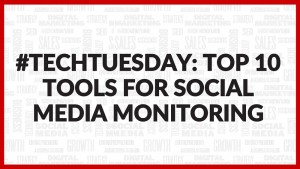How much data does your organization have that might be valuable enough to barter? Here are some tips for getting true value from your data.
“Data is an asset.” We hear that phrase in countless vendor presentations, conferences and advertisements. And for some companies, data is, indeed, an asset.
For example, high-tech companies like Google are built on the value of their data. Google began by analyzing data from the web. With its search engine at the heart of data collection, it could offer data gathering of adjacent fields and analysis from that data. Every acquisition Google makes adds to personal information gathered to serve their markets. It is data that powers their advertising supremacy.
Google, Amazon, Apple and Microsoft combined are worth $ 5 trillion. That’s roughly the value of the Netherlands. So, what do these high-tech companies have that keeps them growing?
Data. They have data:
- About consumer purchases.
- From devices that they develop.
- From services that they provide, such as cloud, gaming, etc.
All this data has a value that contributes to their overall value as a company.
But your company has data as well, data that can probably be just as valuable to your business as Google’s is to theirs. Here are some steps to ensure you derive the most from your company’s data.
1. Assess the market for your data
Before you can value your data in the marketplace, you need to determine if you have an asset that others might want and that the asset can be made available to others. Let’s tackle these situations separately.
Do you have an asset that others will pay for?
Just because you believe that your information is golden doesn’t mean that it is. For example, if you own a tractor company and you collect IOT data on these tractors, you might believe that your dealers would pay for information that predicts when parts might fail. But the dealers may think that that information is something they should have anyway because it allows them to service your product better.
Let’s look at other data assets. Suppose you have collected information for years about which URLs on the web belong to suspicious actors. Would that information be valuable to security application providers, security officers, the government or the private industry? Do you know the answer?
Here’s a quick calculator that will give you an idea of how to look at personal data — your data. This calculator was developed by the Financial Times and helps you to understand how valuable the information is that you possess. This is a beginning step to understanding the value associated with data.
Like all good product managers, you may have to conduct market research to determine what market segments your data appeals to and how much those segments will pay for the information. With this information, you can begin to “package” your data product to sell.
Do you have the right to ‘sell’ the data you have?
When marketers think about buying data, they usually jump to thoughts of customer lists with vital email addresses. That kind of data has been collected under regulations like the California Consumer Protection Act (CCPA) or the General Data Protection Regulation (GDPR) of the European Union.
With both overarching regulations, you first need a legal basis for processing personal data on your customers. Consent — or opt-in — is the most common legal basis. But remember, consent means that personal data can only be used for the purpose for which it is collected.
To use it for any other purpose, you must inform the customer of your use. So, if you plan on selling your customer data, you need to have informed your customers when you asked for consent to market to them in the first place. Otherwise, you need to change your privacy statement.
Most of the time, your intention on how you will use the data is included in a privacy statement. But if it’s not there today and you want to sell customer data, you cannot simply change the statement without communicating to the customers about the change. You must give them the opportunity to opt out. This action could impact the amount of data you retain with the ability to use it and, hence, your data revenue.
2. Assess the quality of your product
Let’s now look at what every product owner must do to ensure quality products. First, they need to assess the quality of the data they have determined can be sold. Remember that data has some qualities that should be managed regularly. These should include:
- Accuracy: How well does the data field represent reality? Is the information in the field valid?
- Completeness: How many of the fields in your data set actually have data?
- Coverage: How well does the data set you will sell cover the market segment or use case the buyer needs?
- Consistency: How consistently is the data formatted? Does your data represent dates in the same format, or does it abbreviate street addresses in the same way?
- Duplication: How many of the records in your dataset are duplicates? Buyers don’t like paying twice for the same record.
- Timeliness: Does the data set you are selling consist of recent data or a mixture of old and new? What is your buyer interested in?
- Detail: How detailed is the data set? This is especially helpful if you are selling unstructured data gleaned from web transactions. When selling images, ensuring that they are tagged appropriately and consistently is a detail most buyers require.
Most buyers will insist on a quality report of the data purchased. So, now you have an identified data set of sufficient quality to entice a buyer. What do you do next?
3. Develop a strategy for ROI
Countless questions may need to be answered in the strategy that you develop for the sale of your data. Here are just a few:
- Will the data be purchased on a by-use basis?
- In other words, the buyer gets exclusive use of the data for a particular event but must not use the data again for another event.
- Will you make the data set available as a service?
- In this case, the buyer would have access to the data as needed, but the entire data set would reside with you, perhaps in a cloud dedicated to this activity.
- Can the data set usage be transferred from a company to that company’s partners or resellers?
- In what format will the data be made available? Will it be transferred via FTP or some other way to ensure security?
The most important question to answer is: Why are you considering the sale of your data? Is it to provide an additional stream of revenue for your company? To help foster better relationships with your partners? To establish a new business within the company? Being clear on your purpose for selling the data is primary.
The next phase in your strategy development is ensuring you know why the customer would buy your data. This may require that you do some primary research with the intended buyers to determine not only if they would buy the data but how much they would be willing to pay for it and how they would want it to be made available. Driving a primary research effort helps to gain clarity for this venture.
Then, you need to evaluate your expected revenue against the expense to package, market and monitor the sale of data. Often, organizations forget that this is a specialized effort and cannot merely be managed by the data team in place for day-to-day efforts. Selling a company’s data requires full support from across the organization.
Before making any major decisions about why or how to sell your data, read Doug Laney’s book “Infonomics” which will give you a good background on all the considerations when turning data into a real asset.
4. Develop organizational support for data as a product
With an ROI for this venture, you’ve taken the first step to develop organizational support for data as a product. Selling data will require an operational structure, marketing programs and reporting. To make the structure happen, you will need budget, people and executive support. Executive support is the most important of those requirements.
Organizational support also extends to the team responsible for managing data and ensuring its quality. The outcome of their job moves into the spotlight as quality metrics become visible internally and externally. Managers and subject matter experts should understand the implications of this new view on their work.
And, if your organization does not yet have a governance capability, executive management will undoubtedly request accountability on some scale. That leads you to the final step.
5. Establish governance over the operation
Whether your organization has created a governance council, data policies or just ensured that the data team is well managed, beginning to sell your data places a new emphasis on the accountability for data. This usually requires a formal structure or process.
Data governance is a collection of processes, policies, roles, metrics and standards that ensures effective and efficient use of information. If you find that you need help in understanding how to create a governance program and maintain it, please read John Ladley’s book “Data Governance.”
Not all value from data is derived by selling it on the open market. Data can provide value in other ways. At the start of the COVID-19 pandemic, American Airlines used the value of their Advantage data to secure two loans from the government under the CARES act. The loans were valued at $ 4.5B each. At the time, American Airlines said that third-party evaluators had appraised their data at between $ 19.5B and $ 31.5B.
Whether you sell your data, use it to secure loans or just make your company operations more effective, the first steps are the most important:
- Determine what you want from your data.
- Prepare it for use or sale.
- Garner support from your executive team.
The post 5 tips to extract true value from your data appeared first on MarTech.
MarTech(25)
Report Post





